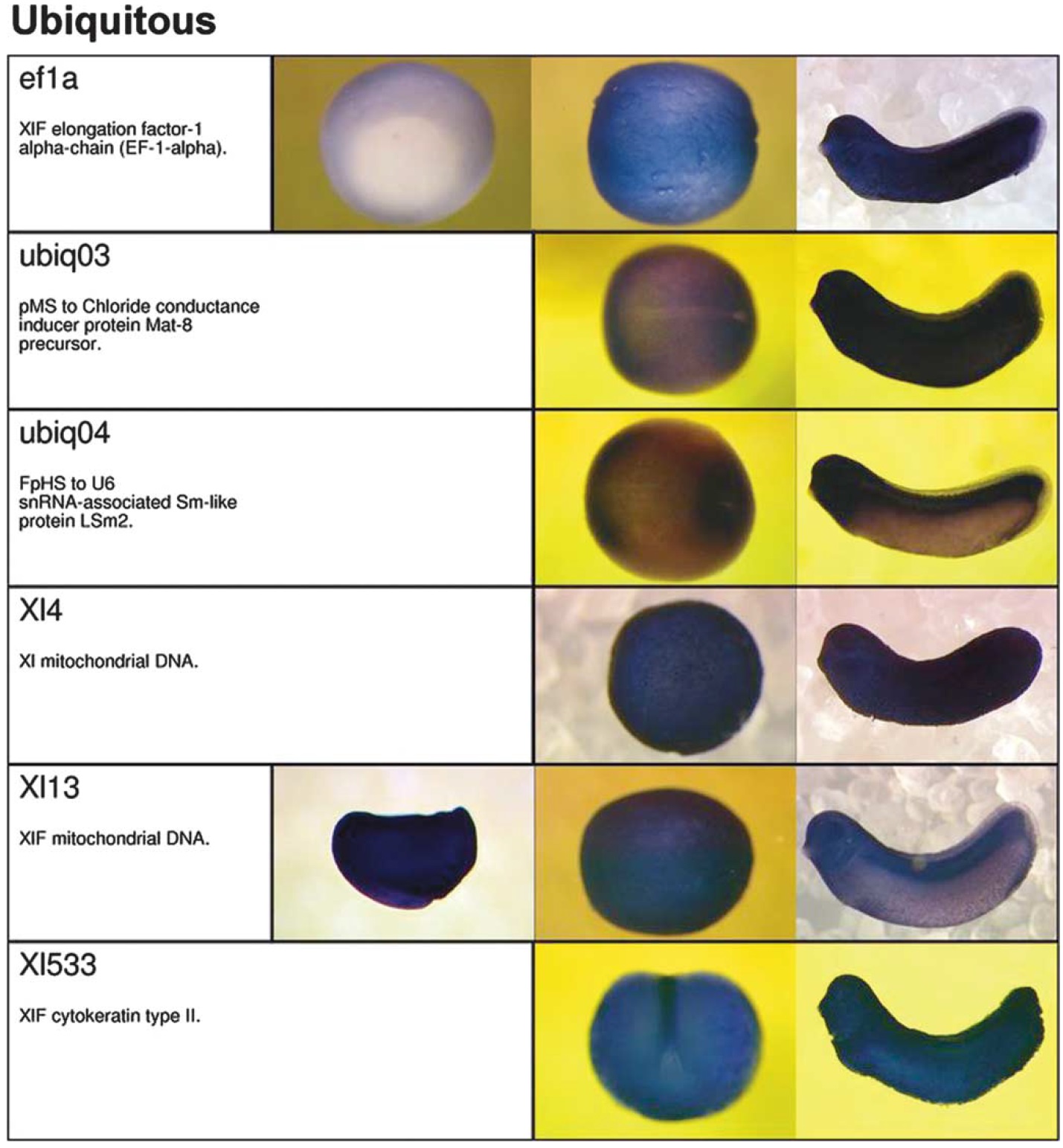
Fig. 2. Whole mount in situ hybridisations and sequence annotation of ubiquitous gene examples. The left-most part represents the result of sequence similarity searches from cDNA sequences representing these genes: gene symbol, gene name or description of the best hit. The molecular function of the gene product is indicated by a single GO term. The right-most part shows in situ hybridisation results for stage 10C, 13, 30 and 4 days embryos. The absence of pictures showing early stages results does not necessarily imply an absence of expression, and can be ubiquitous or exceptionally not documented. The reader can find more pictures showing additional views and results from distinct experiments in Axeldb database, and a description of the expression pattern using a controlled vocabulary. Xl, known Xenopus gene; F, Full-Length Open Reading Frame; A, alternative transcript; p, protein similarity; n, nucleotidic similarity; HS, high similarity; MS, medium similarity; WS, weak similarity.
Image published in: Pollet N et al. (2005)
Copyright © 2005. Image reproduced with permission of the Publisher, Elsevier B. V.
Permanent Image Page
Printer Friendly View
XB-IMG-154854